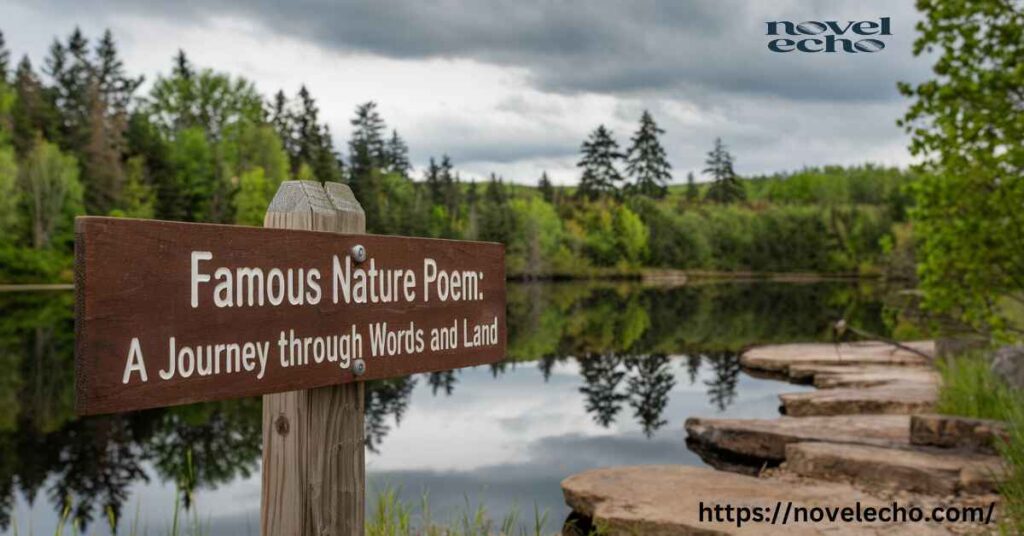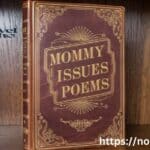Famous Nature Poem: Nature has always been a powerful muse for poets. The world around us, whether it’s the serene beauty of a field of flowers or the melancholic calm of a stormy sea, has inspired some of the most profound poetry ever written. In this article, we’ll dive into some of the most famous nature poems, focusing on the works of poets who skillfully captured the essence of nature’s beauty, alongside the deep feelings it stirs within us.
The Significance of Nature in Poetry
Nature and poetry have always been intricately linked. For instance, for centuries, poets have looked to the natural world to explore their deepest thoughts, fears, and hopes. In particular, through nature, they express emotions like love, loneliness, beauty, and even death. As a result, in nature poetry, the world mirrors the human soul. Ultimately, it reflects feelings that words alone often cannot describe.
Poetry allows readers to experience natural beauty through vivid imagery and sensory details. From the rustling of leaves to the radiant glow of a sunset, the poet invites us to connect deeply with nature. This connection has become even more profound during various literary periods, such as the Romantic era, when poets embraced nature not just as a setting but as a source of spiritual and emotional nourishment.
One of the best-known poets of this era is William Wordsworth, a pioneer of Romantic poetry. His works beautifully exemplify the connection between the beauty of nature and human emotion. For example, his iconic poem, “I Wandered Lonely As A Cloud,” highlights this relationship. Additionally, let’s explore this masterpiece along with other timeless poems that have stood the test of time.
“I Wandered Lonely as a Cloud” by William Wordsworth
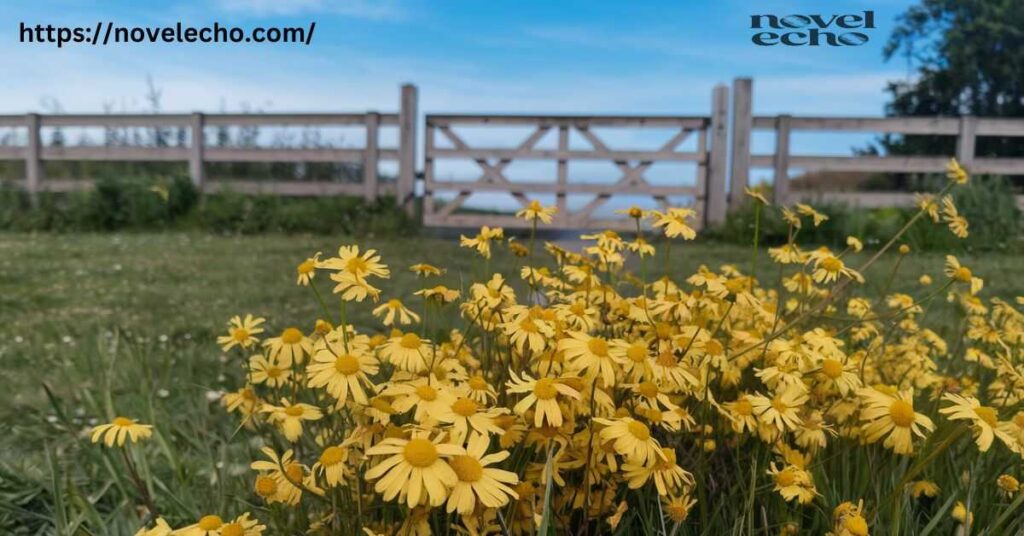
Famous Nature Poem
I wandered lonely as a cloud
That floats on high o'er vales and hills,
When all at once I saw a crowd,
A host, of golden daffodils;
Beside the lake, beneath the trees,
Fluttering and dancing in the breeze.
Continuous as the stars that shine
And twinkle on the Milky Way,
They stretched in never-ending line
Along the margin of a bay:
Ten thousand saw I at a glance,
Tossing their heads in sprightly dance.
The waves beside them danced; but they
Out-did the sparkling waves in glee:
A poet could not but be gay,
In such a jocund company:
I gazed—and gazed—but little thought
What wealth the show to me had brought:
For oft, when on my couch I lie
In vacant or in pensive mood,
They flash upon that inward eye
Which is the bliss of solitude;
And then my heart with pleasure fills,
And dances with the daffodils.Summary of the Poem:
In “I Wandered Lonely as a Cloud,” Wordsworth reflects on the transformative power of nature. The poem begins with the poet describing himself as a solitary figure, likening his loneliness to that of a cloud drifting through the sky. While in this state, he suddenly comes upon a field of daffodils that fill him with joy. The daffodils, dancing in the breeze, become a symbol of nature’s eternal beauty and its ability to lift the human spirit. Even after he leaves the scene, the memory of the daffodils continues to bring him comfort in times of solitude, illustrating the profound impact nature can have on the mind and heart.
Inspirations Behind the Poem:
The inspiration for “I Wandered Lonely as a Cloud” came from a journal entry by Wordsworth’s sister, Dorothy, who recounted a walk the two of them took in the Lake District. During their walk, they encountered a stunning scene of wild daffodils swaying in the wind along the bay. This vivid experience stayed with Wordsworth, eventually inspiring him to write one of the most celebrated pieces of Romantic poetry. The poem reflects the core values of the Romantic era: the glorification of nature, the emphasis on personal emotions, and the belief that nature is a source of spiritual renewal.
“The Road Not Taken” by Robert Frost
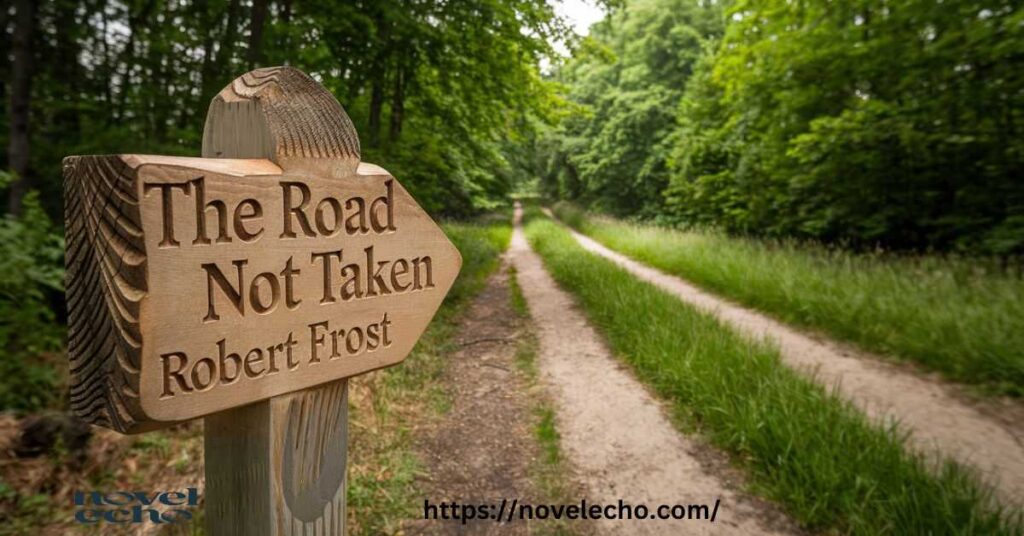
Famous Nature Poem
Two roads diverged in a yellow wood,
And sorry I could not travel both
And be one traveler, long I stood
And looked down one as far as I could
To where it bent in the undergrowth;
Then took the other, as just as fair,
And having perhaps the better claim,
Because it was grassy and wanted wear;
Though as for that the passing there
Had worn them really about the same,
And both that morning equally lay
In leaves no step had trodden black.
Oh, I kept the first for another day!
Yet knowing how way leads on to way,
I doubted if I should ever come back.
I shall be telling this with a sigh
Somewhere ages and ages hence:
Two roads diverged in a wood, and
I took the one less traveled by,
And that has made all the difference.Summary of the Poem:
Robert Frost perfectly captures the tension between choices and fate in his famous work, “The Road Not Taken,” though many often misinterpret it. The poem describes the speaker’s encounter with two diverging paths in a wood. After pondering both options, the speaker chooses the less traveled path, recognizing that this choice will shape the rest of his life. While the poem centers on the idea of choice, it also speaks to the unpredictability of life’s journey, represented by the natural beauty of the forest.
Inspirations Behind the Poem:
Frost was inspired by his frequent walks in the woods near his home in New Hampshire, where he often found himself contemplating life decisions. The poem also reflects the influence of his friend Edward Thomas, who would often regret the paths not taken during their walks together. Though the poem is often seen as an anthem of individualism, it is, at its heart, a reflection on life’s inevitable choices and the consequences that follow. The natural beauty of the woods becomes a metaphor for life’s complex decisions.
“To Autumn” by John Keats
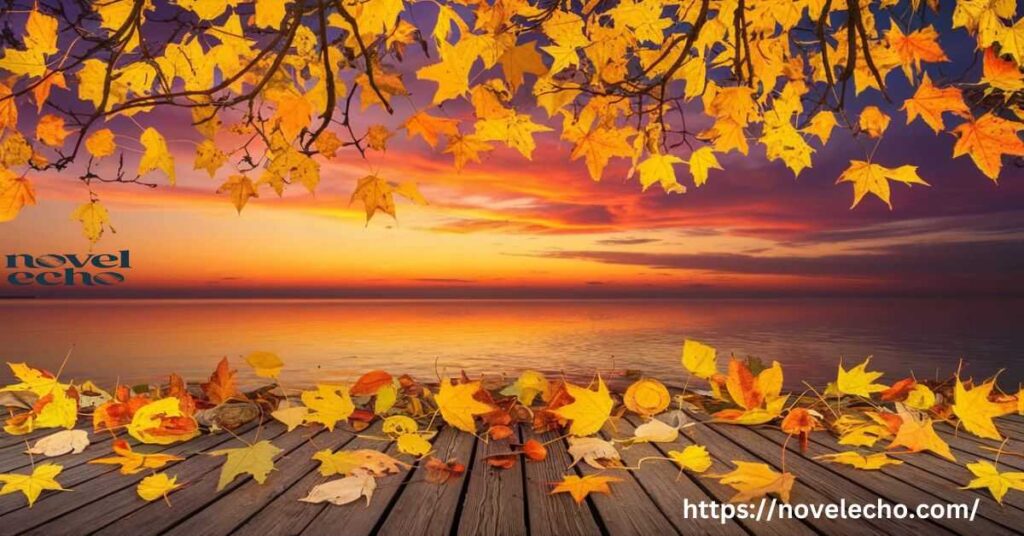
The Poem:
Season of mists and mellow fruitfulness,
Close bosom-friend of the maturing sun;
Conspiring with him how to load and bless
With fruit the vines that round the thatch-eaves run;
To bend with apples the mossed cottage-trees,
And fill all fruit with ripeness to the core;
To swell the gourd, and plump the hazel shells
With a sweet kernel; to set budding more,
And still more, later flowers for the bees,
Until they think warm days will never cease,
For Summer has o'er-brimmed their clammy cells.
Who hath not seen thee oft amid thy store?
Sometimes whoever seeks abroad may find
Thee sitting careless on a granary floor,
Thy hair soft-lifted by the winnowing wind;
Or on a half-reaped furrow sound asleep,
Drowsed with the fume of poppies, while thy hook
Spares the next swath and all its twined flowers:
And sometimes like a gleaner thou dost keep
Steady thy laden head across a brook;
Or by a cider-press, with patient look,
Thou watchest the last oozings, hours by hours.
Where are the songs of Spring? Ay, where are they?
Think not of them, thou hast thy music too,
While barred clouds bloom the soft-dying day,
And touch the stubble-plains with rosy hue;
Then in a wailful choir the small gnats mourn
Among the river sallows, borne aloft
Or sinking as the light wind lives or dies;
And full-grown lambs loud bleat from hilly bourn;
Hedge-crickets sing; and now with treble soft
The red-breast whistles from a garden-croft;
And gathering swallows twitter in the skies.Summary of the Poem:
John Keats’s “To Autumn” is a rich and vivid celebration of the season of autumn. The poem describes autumn in all its fullness, from the ripening of fruit and the swelling of gourds to the eventual decline of the harvest and the onset of winter. Unlike poems that celebrate the vibrancy of spring or the renewal of summer, “To Autumn” captures the bittersweet beauty of the season’s transition, reminding us of the cyclical nature of life.
Inspirations Behind the Poem:
Keats wrote “To Autumn” in 1819, during a time when he was deeply reflective about life and the passage of time. He was inspired by a walk he took near Winchester, where he was struck by the tranquility and beauty of the changing season. The poem reflects his appreciation for the present moment and his ability to find beauty even in the quiet decline of nature, a reflection of the broader Romanticism movement that emphasized emotional depth and the passage of time through nature’s lens.
“The Raven” by Edgar Allan Poe

Famous Nature Poem
Once upon a midnight dreary, while I pondered, weak and weary,
Over many a quaint and curious volume of forgotten lore
While I nodded, nearly napping, suddenly there came a tapping,
As of someone gently rapping, rapping at my chamber door.
“’Tis some visitor,” I muttered, “tapping at my chamber door
Only this and nothing more.”
Ah, distinctly I remember it was in the bleak December;
And each separate dying
ember wrought its ghost upon the floor.
Eagerly I wished the morrow; vainly I had sought to borrow
From my books surcease of sorrow sorrow for the lost Lenore
For the rare and radiant maiden whom the angels name Lenore
Nameless here for evermore.(Excerpt from “The Raven”)
Summary of the Poem:
In “The Raven,” Poe explores themes of loss, mourning, and the haunting presence of memory. The poem unfolds on a stormy night. During this dark time, a raven visits the speaker and repeatedly utters the word “Nevermore.” This refrain intensifies the speaker’s sense of despair. Though the poem is not a traditional nature poem, Poe’s use of natural elements the midnight storm, the raven itself underscores the power of nature as a reflection of human emotion.
Inspirations Behind the Poem:
“The Raven” is heavily influenced by Poe’s personal life, particularly his experiences with loss and death. His use of natural symbols, such as the raven and the storm, reflect the emotional turbulence he felt. While Poe is known for his gothic and often dark themes, he shared with Romantic literature a deep connection between the natural beauty of the world and the intense emotional states it can evoke.
Conclusion
Nature has long been a source of inspiration for poets across various literary periods, from Romanticism to modern times. The poems explored here, including Wordsworth’s lyrical reflection on daffodils and Keats’s celebration of autumn, remind us of the enduring relationship between nature and poetry. Through the beauty of nature, poets have the ability to express their most profound emotions and offer readers a way to connect more deeply with the world around them. Whether in moments of joy, contemplation, or sorrow, nature will continue to serve as a wellspring of poetic expression for generations to come.

David Jonus is an experienced writer with a deep passion for the world of literature. As the voice behind Novel Echo, David explores the beauty of words, offering readers inspiring guides, timeless poetry, and thought-provoking reflections. With a focus on celebrating the magic of storytelling, David crafts articles that resonate with both seasoned and aspiring literature lovers.

